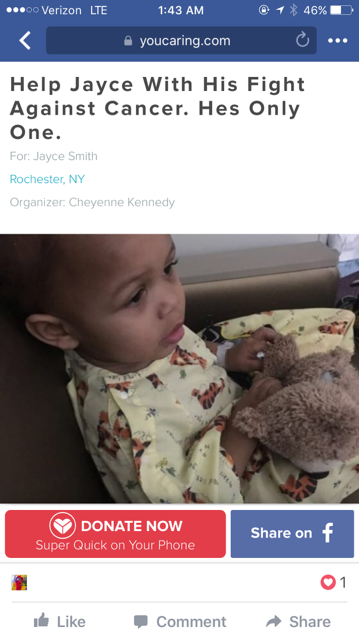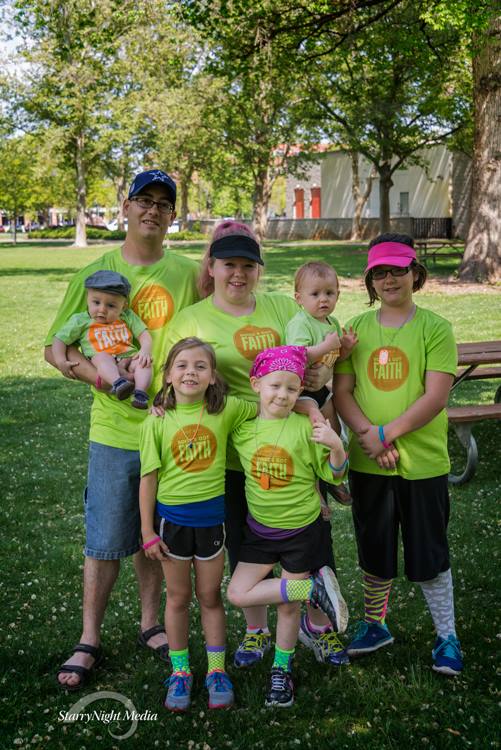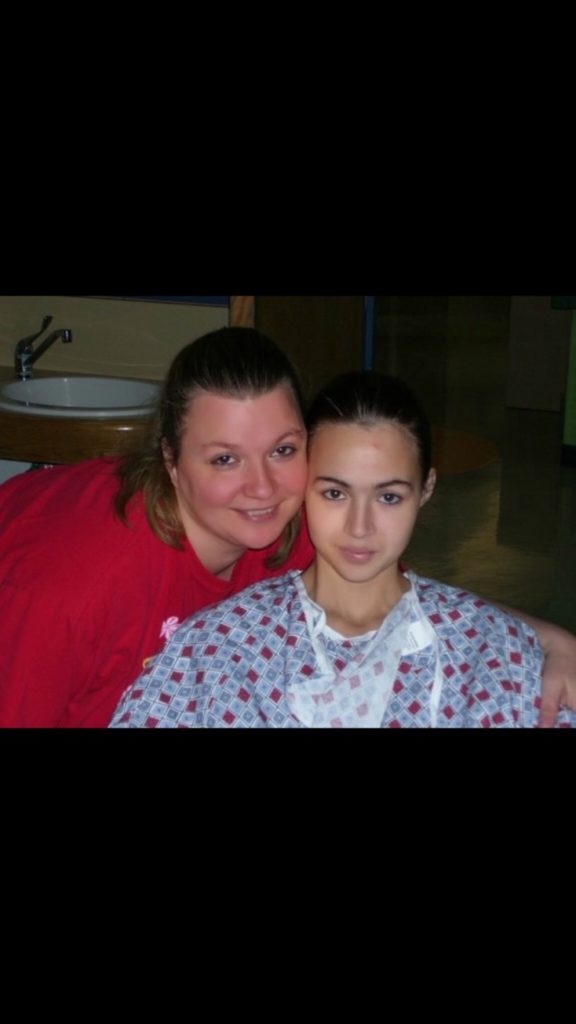Brighten Lexy’s Day with a Personalized Audio Greeting!
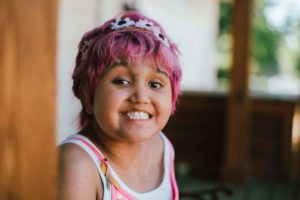 Join together with us to show childhood cancer warrior Lexy that she has the love and support of the childhood cancer community across the country! Alexa—Lexy for short—has been fighting a persistent and aggressive brain tumor continuously for 13 years and is now facing a novel, experimental treatment designed to target intensive chemotherapy drugs directly at the tumor. In her 13 years of treatment, Lexy has experienced just about everything a childhood cancer warrior can go through. Yet because this treatment will require long periods of sedation and hospitalization and must include a potentially weaker combination of chemotherapy drugs than “usual”, Lexy and her family are nervous and anxious as she embarks on this next phase of her cancer journey.
Join together with us to show childhood cancer warrior Lexy that she has the love and support of the childhood cancer community across the country! Alexa—Lexy for short—has been fighting a persistent and aggressive brain tumor continuously for 13 years and is now facing a novel, experimental treatment designed to target intensive chemotherapy drugs directly at the tumor. In her 13 years of treatment, Lexy has experienced just about everything a childhood cancer warrior can go through. Yet because this treatment will require long periods of sedation and hospitalization and must include a potentially weaker combination of chemotherapy drugs than “usual”, Lexy and her family are nervous and anxious as she embarks on this next phase of her cancer journey.
Let’s help Lexy stay strong during this next phase of her treatment by sending her personalized audio greetings from across the country. Let her hear your voice, your words of encouragement, your expressions of support as she begins this difficult time! Let Lexy know that she and her family are never alone in their battle!
Want to participate? Simply record yourself saying some words of greeting, support, and encouragement, reading your favorite inspirational poem or song lyrics, or even singing a special song! Then you can either
Lexy’s Story: A Princess Warrior Who Refuses to Give Up!
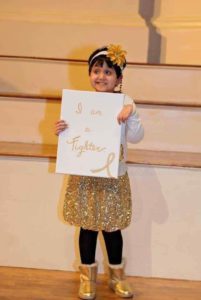 From her first diagnosis at 14 months through her most recent relapse at age 14 (relapse #8, for anyone who’s counting), through dangerous surgeries and experimental treatments, Lexy continues to fight childhood cancer with awe-inspiring courage and determination. She has undergone 11 brain surgeries, participated in four clinical trials, sought treatment in five states, and been told “there is nothing more we can do”. Yet this amazing cancer warrior simply refuses to let her brain tumor—which she has named “Goomer”—win. As she puts it, “I will KICK CANCER’S BOOTY!! Hiii-Yaaaa!” *Kicks Foot*. With attitude like that, we know she can do it!
From her first diagnosis at 14 months through her most recent relapse at age 14 (relapse #8, for anyone who’s counting), through dangerous surgeries and experimental treatments, Lexy continues to fight childhood cancer with awe-inspiring courage and determination. She has undergone 11 brain surgeries, participated in four clinical trials, sought treatment in five states, and been told “there is nothing more we can do”. Yet this amazing cancer warrior simply refuses to let her brain tumor—which she has named “Goomer”—win. As she puts it, “I will KICK CANCER’S BOOTY!! Hiii-Yaaaa!” *Kicks Foot*. With attitude like that, we know she can do it!
Lexy’s story began when she was just two months old and diagnosed with a rare genetic disorder called Neurofibromatosis type 1 (NF1). Occurring in only about 1 out of every 3,000 individuals, NF1 is characterized by the growth of multiple non-cancerous tumors on the skin and nerves, as well as the development of abnormal pigmentation of the skin. Unfortunately, about 15% of children diagnosed with NF1 will develop malignant brain tumors (gliomas), usually around the nerves of the eye.
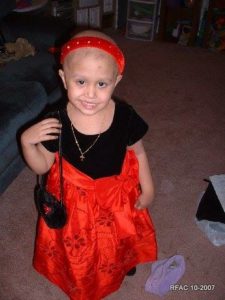 For the first year of her life, Lexy progressed just like any healthy, happy child, despite the NF1 diagnosis, crawling and starting to take her first shaky steps. But just after her first birthday, her parents noticed that she had stopped trying to walk and had started to drag her left leg as she crawled. Concern turned to alarm when Lexy began clutching her left arm tightly to her chest. A trip to the pediatrician quickly turned into an emergency MRI, the results of which were devastating. A brain tumor the size of a Granny Smith apple was pressing on Lexy’s brain, causing partial paralysis on the left side.
For the first year of her life, Lexy progressed just like any healthy, happy child, despite the NF1 diagnosis, crawling and starting to take her first shaky steps. But just after her first birthday, her parents noticed that she had stopped trying to walk and had started to drag her left leg as she crawled. Concern turned to alarm when Lexy began clutching her left arm tightly to her chest. A trip to the pediatrician quickly turned into an emergency MRI, the results of which were devastating. A brain tumor the size of a Granny Smith apple was pressing on Lexy’s brain, causing partial paralysis on the left side.
That first year—2004—Lexy underwent two major brain surgeries to reduce the size of the tumor, visiting multiple hospitals in multiple states for critical “second opinions” when told the tumor was inoperable and untreatable. Yet after surgery, the tumor returned, larger and stronger than ever. For the next eight years, treatment developed a pattern: chemotherapy before and after surgery, with an MRI every three months showing continued growth. Each time, the chemotherapy got more intensive with greater side effects. Eventually, the family turned to clinical trials of new drugs, first in New York, then in Boston. Yet each time, “Goomer” returned, stronger than ever.
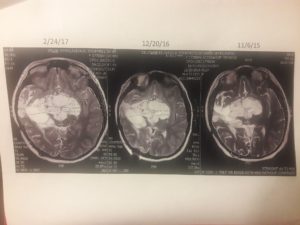 Most recently, Lexy has been participating in a clinical trial in Pittsburg focused on a vaccine-based approach. The goal of this trial is to convince the body that the tumor is an infection, with the goal of training the body to use its own white blood cells to fight the tumor. Unfortunately, after more than a year in this trial, Lexy’s most recent scans show a tumor that is stable but not shrinking. The unhappy conclusion is that the tumor is likely not going to respond to this form of treatment.
Most recently, Lexy has been participating in a clinical trial in Pittsburg focused on a vaccine-based approach. The goal of this trial is to convince the body that the tumor is an infection, with the goal of training the body to use its own white blood cells to fight the tumor. Unfortunately, after more than a year in this trial, Lexy’s most recent scans show a tumor that is stable but not shrinking. The unhappy conclusion is that the tumor is likely not going to respond to this form of treatment.
Side Effects: Long-Term Health Effects of Chemotherapy
By its very nature, chemotherapy is designed to kill cells as they grow. Because cancer cells grow more quickly than normal cells, they are more susceptible to the toxicity of the chemotherapy. Yet normal cells are affected as well, often leading to serious, long-term health problems, especially for children. In Lexy’s case, the location of the tumor, the many surgeries, and the long history of chemotherapy have taken a devastating toll on her young body.
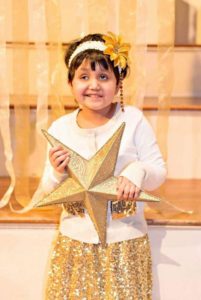 Lexy suffers from partial paralysis on her left side, as a result of the tumor pressing against her brain. Lexy must walk with a splint on her left foot and has permanent paralysis of her left hand, which she calls her “Happy Hand”. At age nine, another brain surgery led to permanent and total blindness. She continues to suffer from seizures. Her kidneys no longer function properly and she suffers from permanent endocrine issues, including adrenal insufficiency, as well as hypothyroidism, meaning that her body cannot regulate temperature properly and she is cold all the time. The thyroid and endocrine issues must be compensated for by constant medication: she takes 15 medications nightly and eight in the morning in addition to the medications required to fight the brain tumor!
Lexy suffers from partial paralysis on her left side, as a result of the tumor pressing against her brain. Lexy must walk with a splint on her left foot and has permanent paralysis of her left hand, which she calls her “Happy Hand”. At age nine, another brain surgery led to permanent and total blindness. She continues to suffer from seizures. Her kidneys no longer function properly and she suffers from permanent endocrine issues, including adrenal insufficiency, as well as hypothyroidism, meaning that her body cannot regulate temperature properly and she is cold all the time. The thyroid and endocrine issues must be compensated for by constant medication: she takes 15 medications nightly and eight in the morning in addition to the medications required to fight the brain tumor!
Relapse #8: One More Battle to be Won
Just after her 14th birthday in mid-February, Lexy and her family were given the devastating news that “Goomer” is not responding to the vaccine-based experimental therapy. Neurosurgeons across the country agree that the tumor is now inoperable. Because the tumor has engulfed the blood vessels feeding both the tumor and the brain, surgeons would be unable to differentiate between the vessels and the tumor, making the surgery exceedingly dangerous. Oncologists also agree that radiation therapy would almost certainly lead to leukemia and/or other secondary cancers due to her NF1 diagnosis.
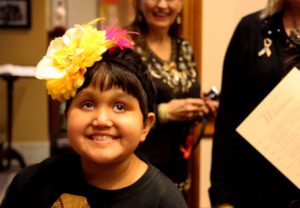 At this time, Lexy and her family are facing another experimental treatment known as Intra-Arterial Chemotherapy. During this treatment, which would be administered in the hospital every four weeks, a custom-tailored cocktail of chemotherapy drugs will be aimed directly at the tumor through a long catheter that enters the body at the groin. This new treatment has shown some success for both adults and children, yet still presents significant challenges for Lexy and her family.
At this time, Lexy and her family are facing another experimental treatment known as Intra-Arterial Chemotherapy. During this treatment, which would be administered in the hospital every four weeks, a custom-tailored cocktail of chemotherapy drugs will be aimed directly at the tumor through a long catheter that enters the body at the groin. This new treatment has shown some success for both adults and children, yet still presents significant challenges for Lexy and her family.
In order to design an effective (hopefully) chemotherapy regime, Lexy’s oncology team has compiled a comprehensive analysis of every single drug administered to Lexy over her 13 years of treatment to identify the ones which Lexy’s tumor has responded to in the past. Unfortunately, during a prior round of chemotherapy, Lexy had a severe and dangerous allergic reaction to one of the two drugs that is generally believed to be most effective during Intra-Arterial Chemotherapy. Therefore, Lexy must rely solely on a 40-year-old drug known as Melphalan, which, due to its extreme toxicity, is usually only administered to adults and/or older teens, or in cases of last resort. This is a dramatic example of the desperate need for development of new, less toxic treatments options specifically designed for childhood cancer and the unique needs of children’s growing bodies.
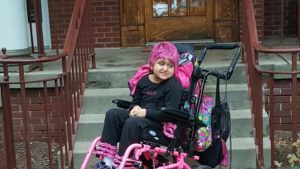 Yet Lexy and her family absolutely refuse to give up and will continue to pursue every available treatment option until they find the one that finally defeats “Goomer”. As Lexy herself says, “I can’t let Goomer win!” Throughout her long fight, she has been supported by her amazing family, especially by her 17-year-old brother, Cameron, whose life, like the lives of so many childhood cancer siblings has been interrupted and disrupted as much by childhood cancer as his sister, yet who continues to stand and fight right by her side; he is Lexy’s Hero as much as she is his Hero!
Yet Lexy and her family absolutely refuse to give up and will continue to pursue every available treatment option until they find the one that finally defeats “Goomer”. As Lexy herself says, “I can’t let Goomer win!” Throughout her long fight, she has been supported by her amazing family, especially by her 17-year-old brother, Cameron, whose life, like the lives of so many childhood cancer siblings has been interrupted and disrupted as much by childhood cancer as his sister, yet who continues to stand and fight right by her side; he is Lexy’s Hero as much as she is his Hero!
Lexy’s courage and determination are truly an inspiration to us all. Thank you for speaking out about childhood cancer, for sharing your story with us, and for serving as an inspiration to other childhood cancer warriors. We know you are going to kick Goomer’s booty, Lexy!
Please visit Lexy on her Facebook page at: https://www.facebook.com/Love4Lexy/
About American Childhood Cancer Organization
American Childhood Cancer Organization (ACCO) is a non-profit charity dedicated to helping kids with cancer and their families navigate the difficult journey from cancer diagnosis through survivorship. Internationally, ACCO is the sole U.S. member of Childhood Cancer International (CCI), the largest patient-support organization for childhood cancer in the world. Here in the United States, ACCO promotes the critical importance of ensuring continued funding into new and better treatment protocols for childhood cancer. And most importantly, ACCO is focused on the children: developing and providing educational tools for children fighting cancer and their families, empowering them in their understanding of childhood cancer and the medical decisions they must make during this difficult journey. All of ACCO’s resources are available free of charge for families coping with childhood cancer.
For additional information about childhood cancer or on ACCO, or to order resources for you or your child, please visit our website at www.acco.org
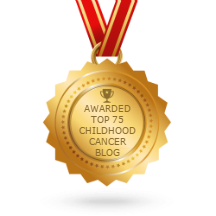 Feedspot has ranked ACCO.org as the #1 Childhood Cancer blog! This is the most comprehensive list of best Childhood Cancer blogs on the internet.
Feedspot has ranked ACCO.org as the #1 Childhood Cancer blog! This is the most comprehensive list of best Childhood Cancer blogs on the internet.


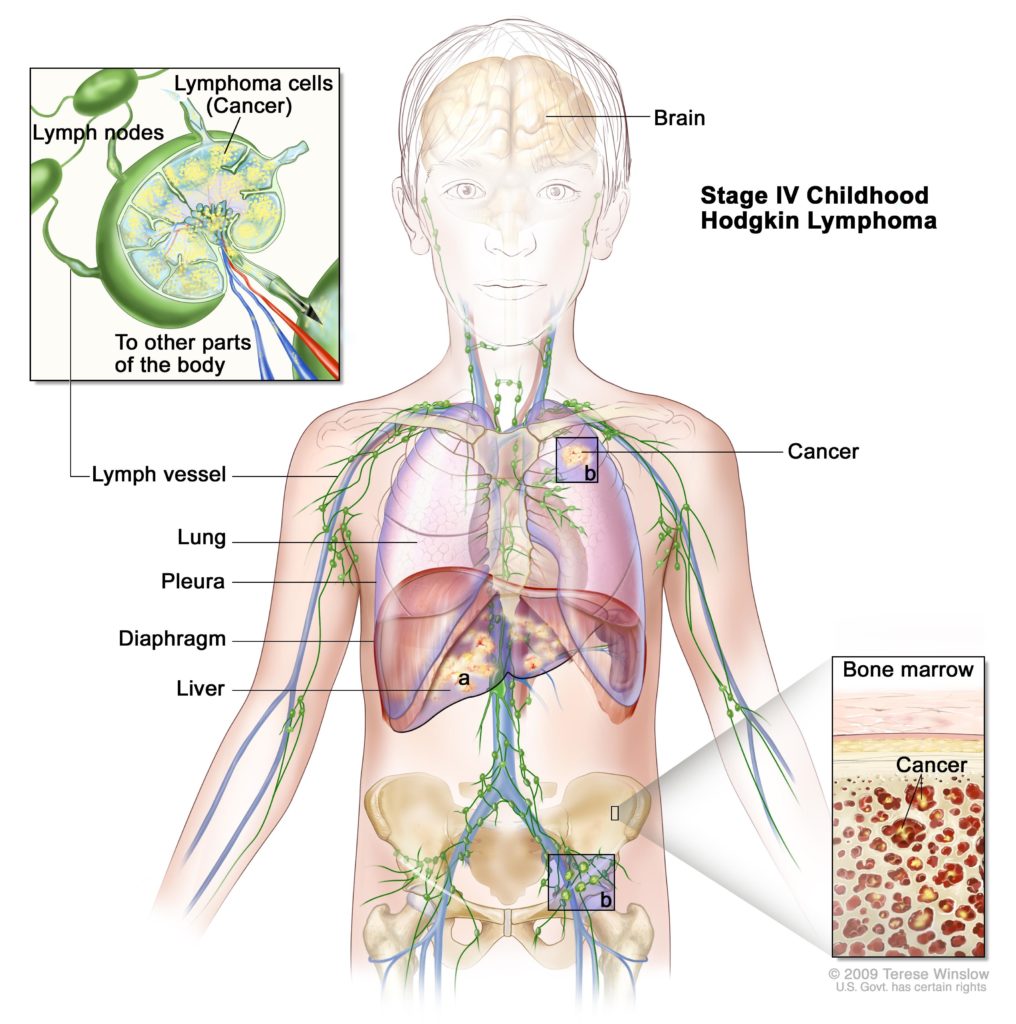


 For the first year of her life, Lexy progressed just like any healthy, happy child, despite the NF1 diagnosis, crawling and starting to take her first shaky steps. But just after her first birthday, her parents noticed that she had stopped trying to walk and had started to drag her left leg as she crawled. Concern turned to alarm when Lexy began clutching her left arm tightly to her chest. A trip to the pediatrician quickly turned into an emergency MRI, the results of which were devastating. A brain tumor the size of a Granny Smith apple was pressing on Lexy’s brain, causing partial paralysis on the left side.
For the first year of her life, Lexy progressed just like any healthy, happy child, despite the NF1 diagnosis, crawling and starting to take her first shaky steps. But just after her first birthday, her parents noticed that she had stopped trying to walk and had started to drag her left leg as she crawled. Concern turned to alarm when Lexy began clutching her left arm tightly to her chest. A trip to the pediatrician quickly turned into an emergency MRI, the results of which were devastating. A brain tumor the size of a Granny Smith apple was pressing on Lexy’s brain, causing partial paralysis on the left side. Most recently, Lexy has been participating in a clinical trial in Pittsburg focused on a vaccine-based approach. The goal of this trial is to convince the body that the tumor is an infection, with the goal of training the body to use its own white blood cells to fight the tumor. Unfortunately, after more than a year in this trial, Lexy’s most recent scans show a tumor that is stable but not shrinking. The unhappy conclusion is that the tumor is likely not going to respond to this form of treatment.
Most recently, Lexy has been participating in a clinical trial in Pittsburg focused on a vaccine-based approach. The goal of this trial is to convince the body that the tumor is an infection, with the goal of training the body to use its own white blood cells to fight the tumor. Unfortunately, after more than a year in this trial, Lexy’s most recent scans show a tumor that is stable but not shrinking. The unhappy conclusion is that the tumor is likely not going to respond to this form of treatment.



 Childhood Hodgkin lymphoma, similarly to adult Hodgkin lymphoma, is a type of malignant cancer of the lymph system, which forms a critical part of the immune system our bodies use to fight disease. Specifically, Hodgkin lymphoma usually begins in lymphocytes, a type of white blood cell responsible for fighting bacteria, viruses, and other foreign invaders. Hodgkin lymphoma makes up about 6% of all childhood cancers. Today, the prognosis for children with Hodgkin lymphoma is significantly higher than even a decade ago, with the five-year survival rate between 90-95%.
Childhood Hodgkin lymphoma, similarly to adult Hodgkin lymphoma, is a type of malignant cancer of the lymph system, which forms a critical part of the immune system our bodies use to fight disease. Specifically, Hodgkin lymphoma usually begins in lymphocytes, a type of white blood cell responsible for fighting bacteria, viruses, and other foreign invaders. Hodgkin lymphoma makes up about 6% of all childhood cancers. Today, the prognosis for children with Hodgkin lymphoma is significantly higher than even a decade ago, with the five-year survival rate between 90-95%. Lyon, France, 11 April 2017 – An international study coordinated by the
Lyon, France, 11 April 2017 – An international study coordinated by the 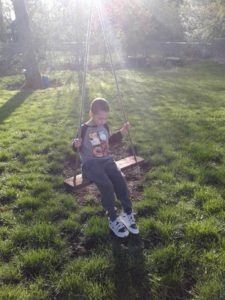 Rainin’s Battle Against Alveolar Rhabdomyosarcoma
Rainin’s Battle Against Alveolar Rhabdomyosarcoma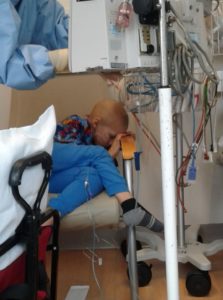 No Time for Vacation: Immediate Relapse
No Time for Vacation: Immediate Relapse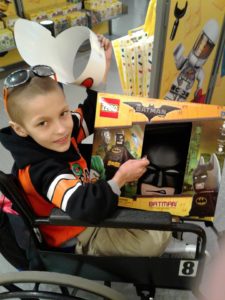 Help Rainin Take a Vacation!
Help Rainin Take a Vacation!